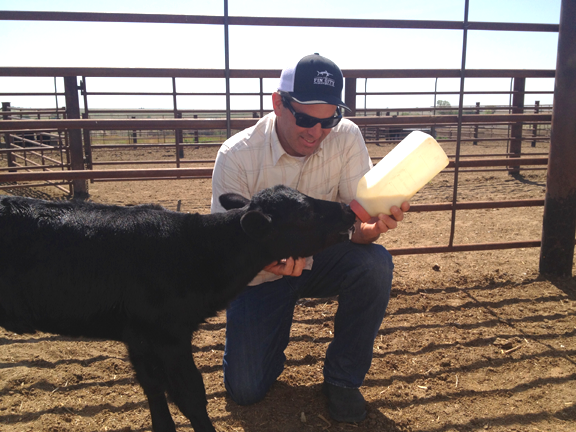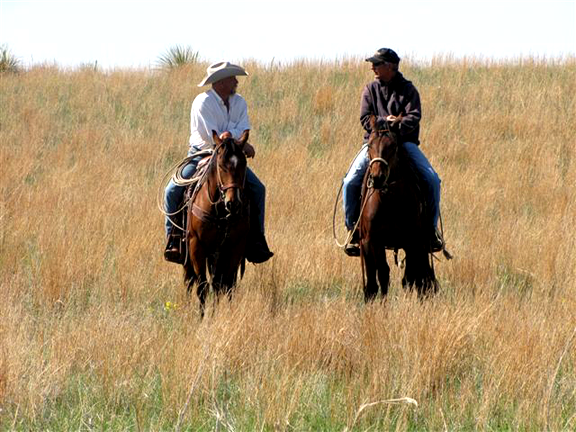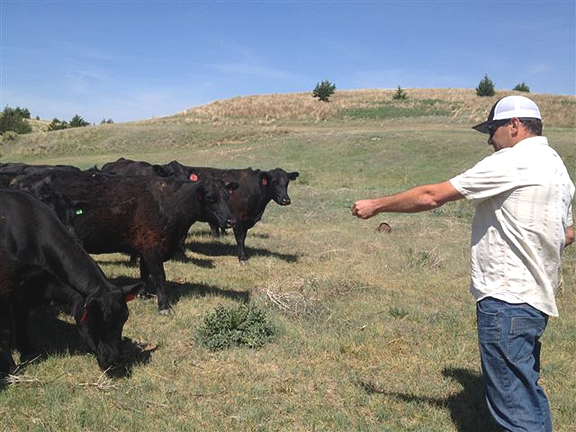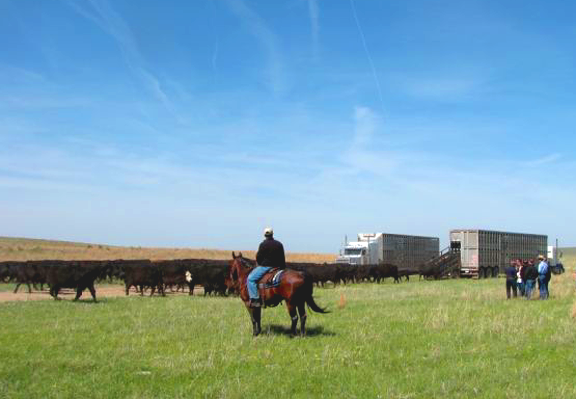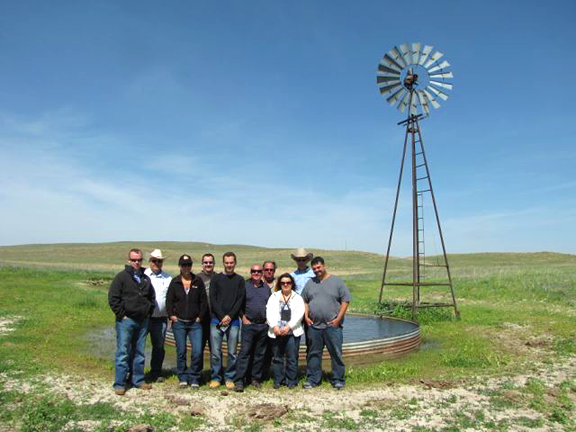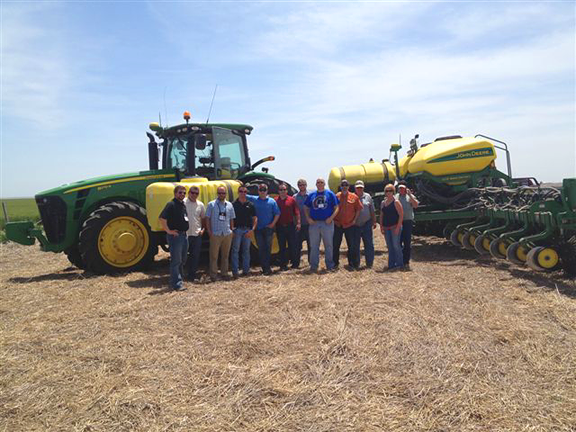It’s not every day the average Joe makes a to-do list that includes fix windmill, plant corn or bottle feed a calf. It’s not a typical day for most meat sales folks, either, but that’s just what happened one fine day in cattle country.
The Certified Angus Beef ® brand invited 25 beef sales men and women from 17 states and two countries on a field trip. The adventure was part of the company’s MBA program — participants earn a master’s of brand advantages degree that focuses on everything from cattle production to meat-cutting to product yield testing and sales skills. Students follow the steak trail from farm gate to dinner plate over a period of months. Educational opportunities culminate in a graduation ceremony.
Recently the group was out ‘riding the range’, so to speak, in Nebraska. They spent time at an Angus ranch, toured the Tyson plant in Lexington, Neb., and visited Chappell Feedlot. It was an opportunity to connect all segments of the beef industry according to event mastermind, Deanna Walenciak.
“MBA class members — folks who sell Certified Angus Beef ® brand products — had a chance to meet amazing ranching families committed to the best Angus beef. It was an action-packed day of watching cows being moved to summer pasture, planting corn, fixing windmills — basically experiencing a typical day in the life of a rancher, if there is such a thing,” she said.
Participants gathered in Denver and drove to North Platte where events kicked off with a steak barbecue at Rishel Angus. On day two, the group divided into three segments, allowing for a more personal experience at host ranches including the Krab Family in Paxton; Rusty and Rachel Kemp of Tryon; and Jeff and Kelsey Ruggles of McCook, Neb.
“Each ranch experience was unique,” Walenciak said. “At the Krab ranch, they moved cattle to summer pasture — a process involving semi-trucks and patient cowboys on horseback.”
She said the thing participants found most intriguing was the pairing of cows and their calves. When cattle are hauled to summer pasture, adult cows are carefully loaded into one truck and calves in another. The separation protects the babies from being injured during the 10-mile trip. When cattle are unloaded, mama cows call for babies and babies cry for mama. Within a short period of time they’re reunited. The instinctive pairing was a miraculous thing for bystanders to watch, Walenciak said.
The cattle countryside is dotted with windmills in this neck of the woods. And what may seem like an antiquated machine to many is still quite active on modern ranches. The windmills are hooked to wells and pump water to distant pastures. Maintaining them is vital to the cattle and MBA students took their turn at helping with repairs.
At the Ruggles ranch, cattle production goes hand in hand with crop farming. The group rode along on feed trucks and even had a chance to sit in a John Deere readied for corn planting. It was an in-depth tour highlighting daily ranch life. It helped the people who sell beef gain a better understanding of the product itself … where it comes from and how it’s produced.
The experience clarified misconceptions about modern beef production.
First and foremost, these are hard-working family ranchers raising high-quality beef. These are not so-called ‘factory farms’. They are men and women, children and grandchildren, living and working in wide open spaces in any kind of weather. Their main priorities begin and end with their land and their cattle.
“This MBA class had a chance to meet hard-working people doing what they love. It’s a low-margin business not a million dollar dream, and it was interesting that the ranchers and visitors shared a sense of camaraderie through it all,” Walenciak said. “They found similarities between the restaurant business and ranching – long days, hard work and a passion for being and producing the very best. They’re connected and that’s key.”
It’s also one of the most important lessons to learn about the beef industry: those who raise high-quality beef are connected to the people selling the product, and both groups are connected to the folks eating that steak or roast or burger.
We’re all links in one chain, and that has advantages for each of us.
To read about Angus ranching families striving to bring the best to your table, click here.

